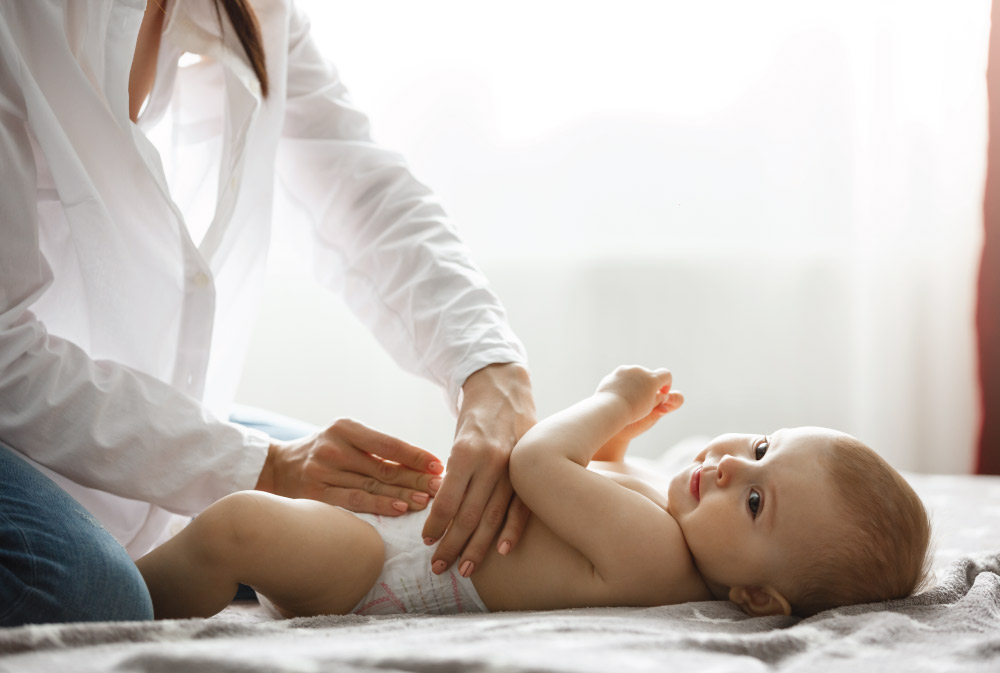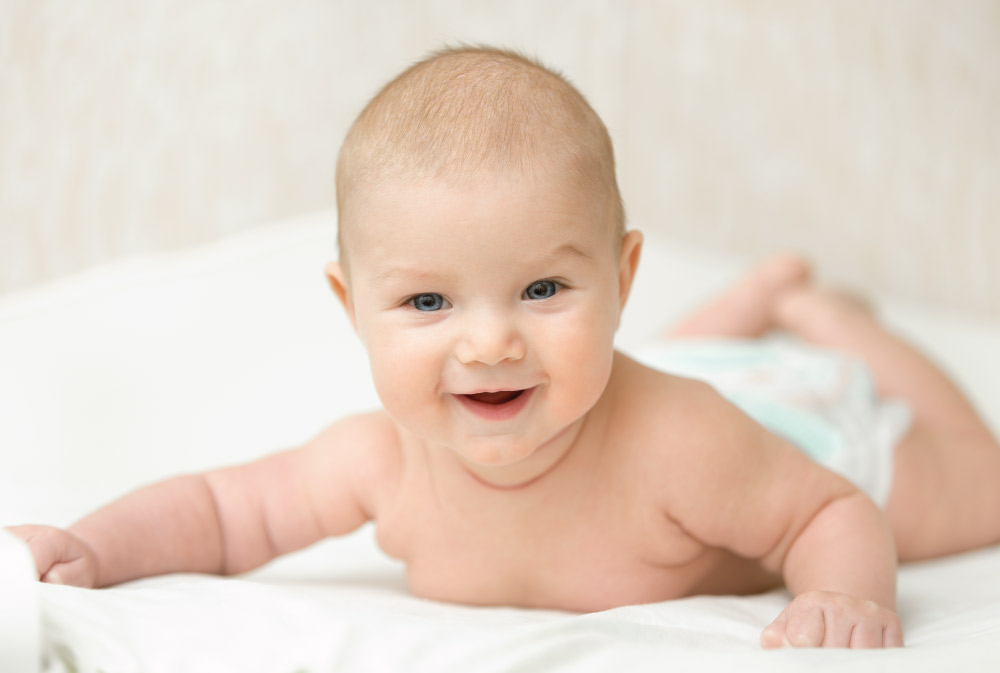Tips for you, ma'am
Things to keep on hand for diaper changes include baby wipes (or washcloths), a change pad, diapers, and ointment or petroleum jelly.
If your baby develops a diaper rash, change them frequently, especially after each bowel movement.
If your baby develops a yeast infection, seek medical attention as soon as you can.
Never changed a diaper before? Don’t worry, you’ll get lots of practice. When it comes to diapers, practice really does make perfect. After all, all the diaper changes you did on your practice doll while you were pregnant just do not compare to the real thing on a vigorous, active baby.
It is helpful to have all the diaper paraphernalia on hand before attempting to change your baby. Try to keep all the necessary items in one place close to where you and your baby spend a lot of your time. A small diaper bag tucked behind your sofa will save you many trips up and down the stairs. Things to keep on hand include baby wipes, a change pad, diapers, and ointment or petroleum jelly. Some parents prefer to use warm water and washcloths instead of baby wipes, since the wipes can sometimes irritate a newborn baby’s skin.


Here are some other tips
- Change your baby often, normally every three to four hours or whenever you feed your baby, to avoid the development of diaper rash. Babies who have frequent stools, and who are not changed often enough, are prone to diaper rash.
- Place a new diaper under your baby’s bottom before you begin removing the soiled one. That way, if your baby decides to urinate or pass stool during the diaper change, the waste will be contained. This will happen more often than you might expect!
- When you remove your baby’s dirty diaper, place it out of their reach right away.
- If you have a boy, drape a washcloth or wipe across their penis immediately, to avoid getting squirted.
- If your son is not circumcised, do not try to retract or try to clean under the foreskin on their penis. If you do this, you risk damaging the very delicate tissues on your son’s penis.
- If you have a girl, make sure to wipe her from front to back, to avoid infections caused by bacteria getting into the vagina.
- After wiping off your baby’s bottom, let it air dry for a few minutes. Some parents like to put ointment or petroleum jelly on their baby’s bottom before putting on the diaper; others don’t.
- Over time, you will find out what works best for your baby.
- When doing up the diaper, if you have a boy, make sure to point their penis downward, to avoid leaks going up the front of the diaper.
- If your newborn baby’s umbilical cord stump has not yet fallen off, make sure to roll down the front end of the diaper so that the stump is exposed to the air. This is more comfortable for the baby, and it will keep the stump dry and less prone to infection.
Diaper rash
If your baby develops a diaper rash, change them frequently, especially after each bowel movement. Stop using baby wipes, as they can be irritating. Instead, wipe your baby’s bottom with a wet cloth. Try to give your baby as much "bare bum time" as possible, to allow it to air out. Spread a thick layer of diaper cream on your baby’s bottom before putting on the next diaper. Avoid the urge to put powder on their bottom, as baby powders tend to be ineffective. If you really want to use powder, try a plain cornstarch powder, and make sure to wash it off well at each diaper change. Allowing powder to accumulate on your baby’s bottom can cause bacteria to grow in that area.
If your baby develops a yeast infection, which is a stubborn red rash over the genitals that proceeds up to the abdomen and down the thighs, seek medical attention as soon as you can.









